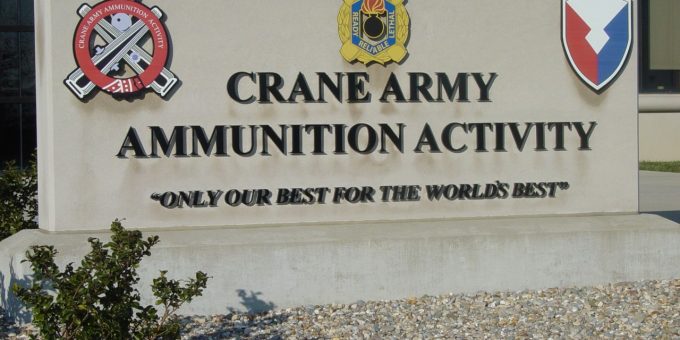
(CRANE) – Since Feb. 3, Naval Support Activity Crane has been running various security and emergency drills as part of Citadel Shield-Solid Curtain 2020, a force protection exercise taking place at Navy installation across the country.
The two-week exercise is broken into two parts, with Citadel Shield being a series of local drills led by Commander, Navy Installations Command. During this period, NSA Crane practiced techniques to apprehend gate runners, deal with suspicious packages and quickly end an active shooter scenario.
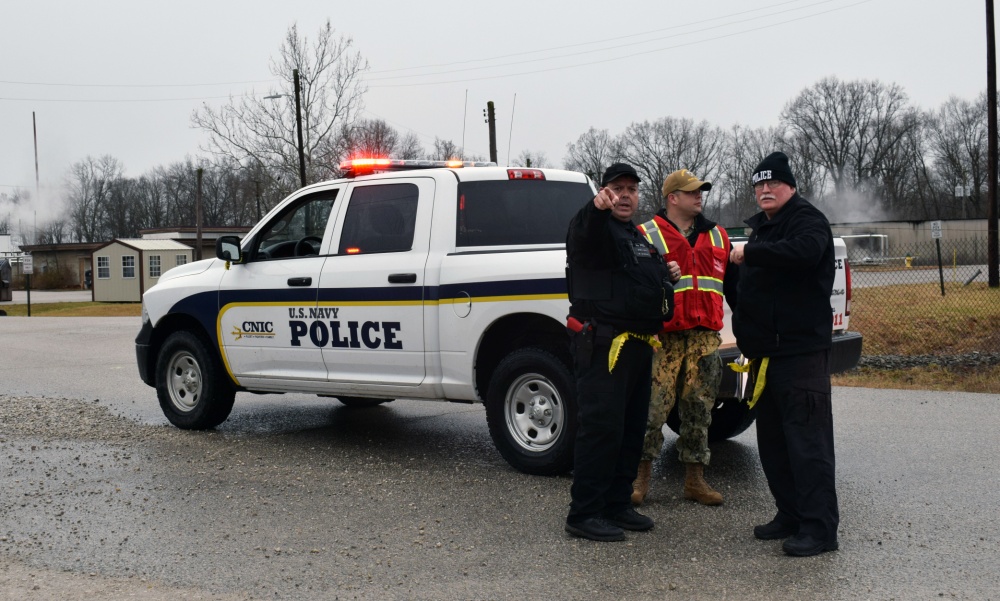
Crane Army Ammunition Activity
“The safety and security of our people and our installation is a top priority,” said CDR Timothy J. Powers, Commanding Officer, NSA Crane. “Throughout these two weeks, we have tested our security force and emergency response against an array of realistic scenarios.”
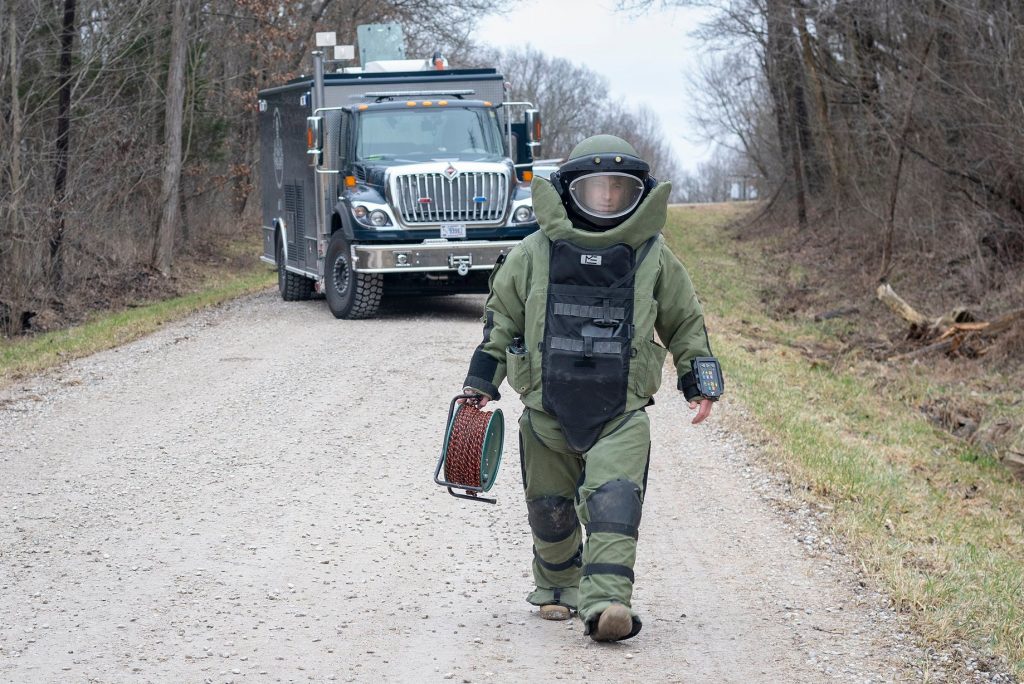
Since NSA Crane is comprised of numerous tenant commands, it is important to involve everyone through each phase from planning to execution for every exercise not just Citadel Shield-Solid Curtain, said Fabian Bahena, Emergency Management Officer, NSA Crane.
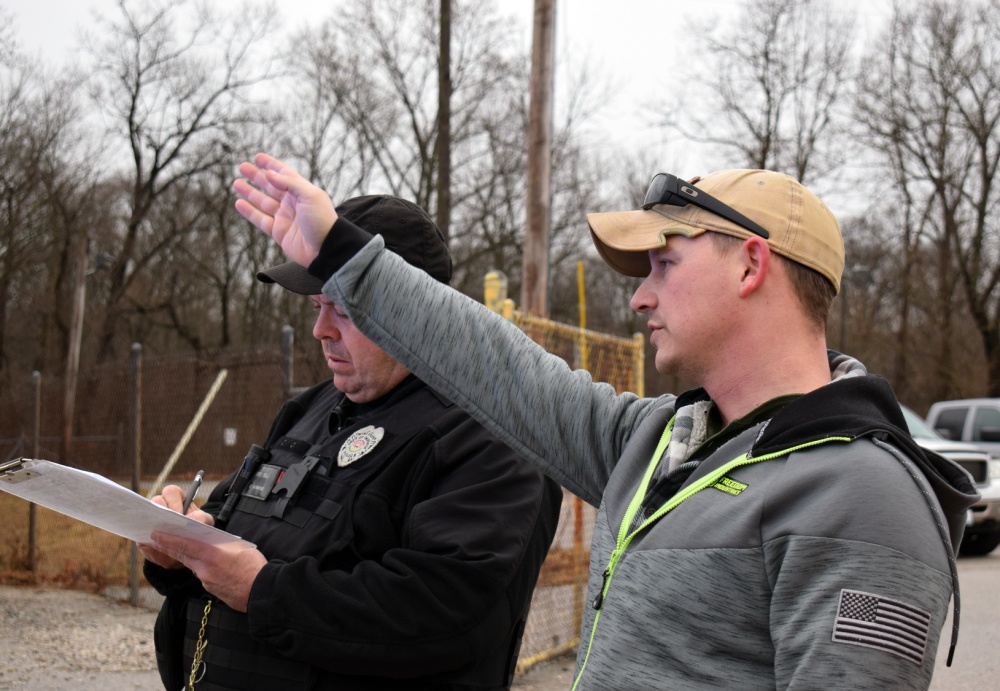
Crane Army Ammunition Activity
Although most drills performed during the first week involved security, additional efforts were taken to involve both Crane Army Ammunition Activity and Naval Surface Warfare Center – Crane Division, the two largest tenants on the installation, added Bahena. NSA Crane also incorporated the Explosive Ordnance Disposal team with a separate drill.
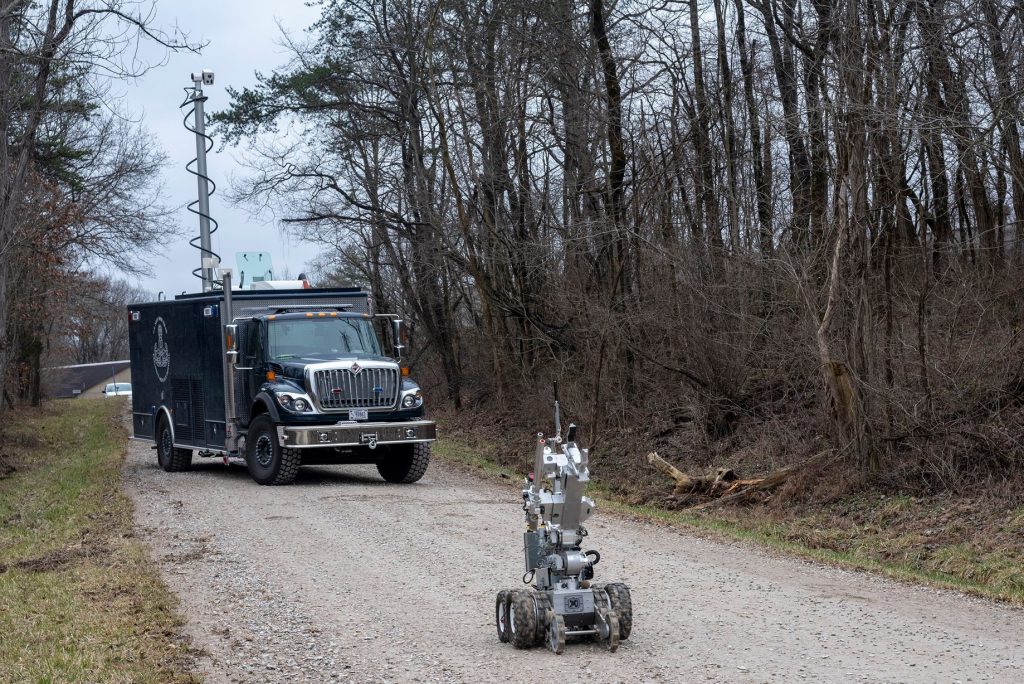
In one scenario, an exercise actor penetrated the gate with a vehicle containing a mock improved explosive device, prompting an EOD response. The following day, CAAA employees were tested after discovering a prop suspicious package before an acting active shooter pretended to opened fire in an NSWC Crane facility, requiring employees to follow lockdown procedures as police cleared the area.
“Although this exercise is not in response to any specific threat, the recent shootings at Pearl Harbor and Pensacola serve as tragic reminders of why an exercise like CS-SC is so important in ensuring our readiness,” said CDR Powers. “We always hope such tragedies never strike here, but if they do, it is crucial we have confidence in our response and training.”
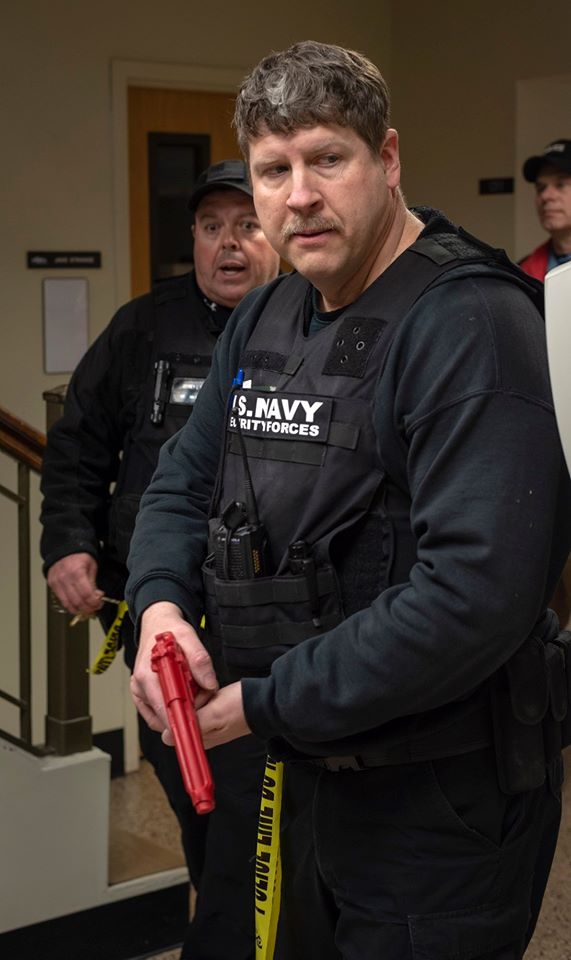
The second part, Solid Curtain, began on Monday, Feb. 10 and is led by US Fleet Forces Command, focused more on command and communications between various commands through escalating and cascading events.
Due to careful and deliberate planning, the various drills performed last week had little impact on installation operations, said CDR Powers. However, as the installation transition into the next phase of Solid Curtain, the workforce may experience delays, particularly at the gates, and should factor in additional time.
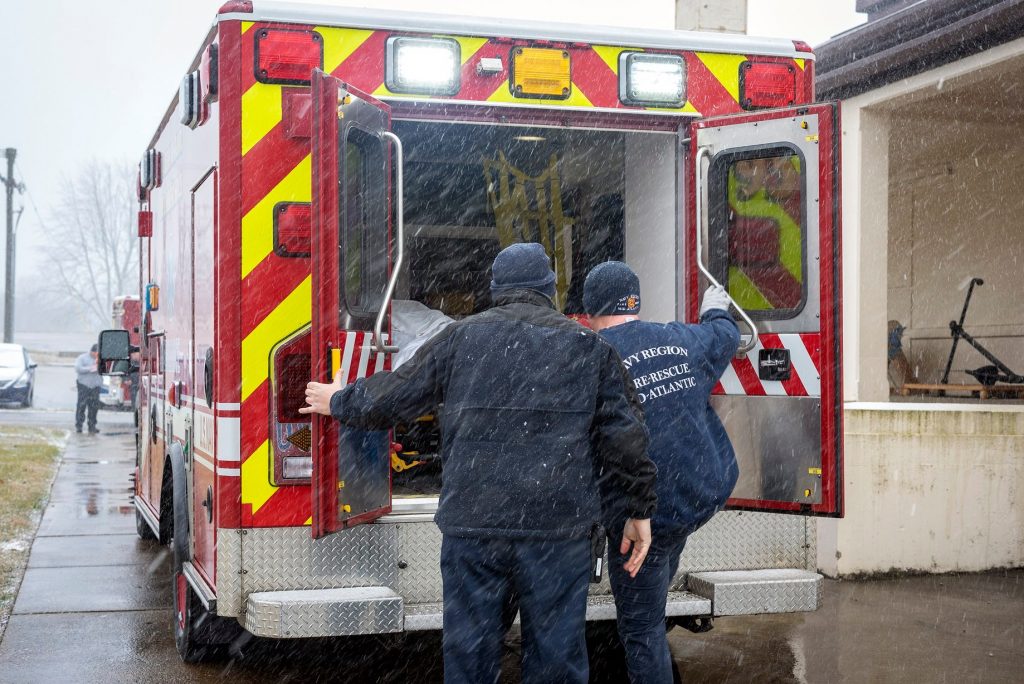
“What may look like an inconvenience may actually allow us the opportunity to ensure we meet our training objectives,” said CDR Powers. “Our workforce’s safety and security are more important than any potential delay.”
Information – story by Jeff M. Nagan, Naval Support Activity Crane



